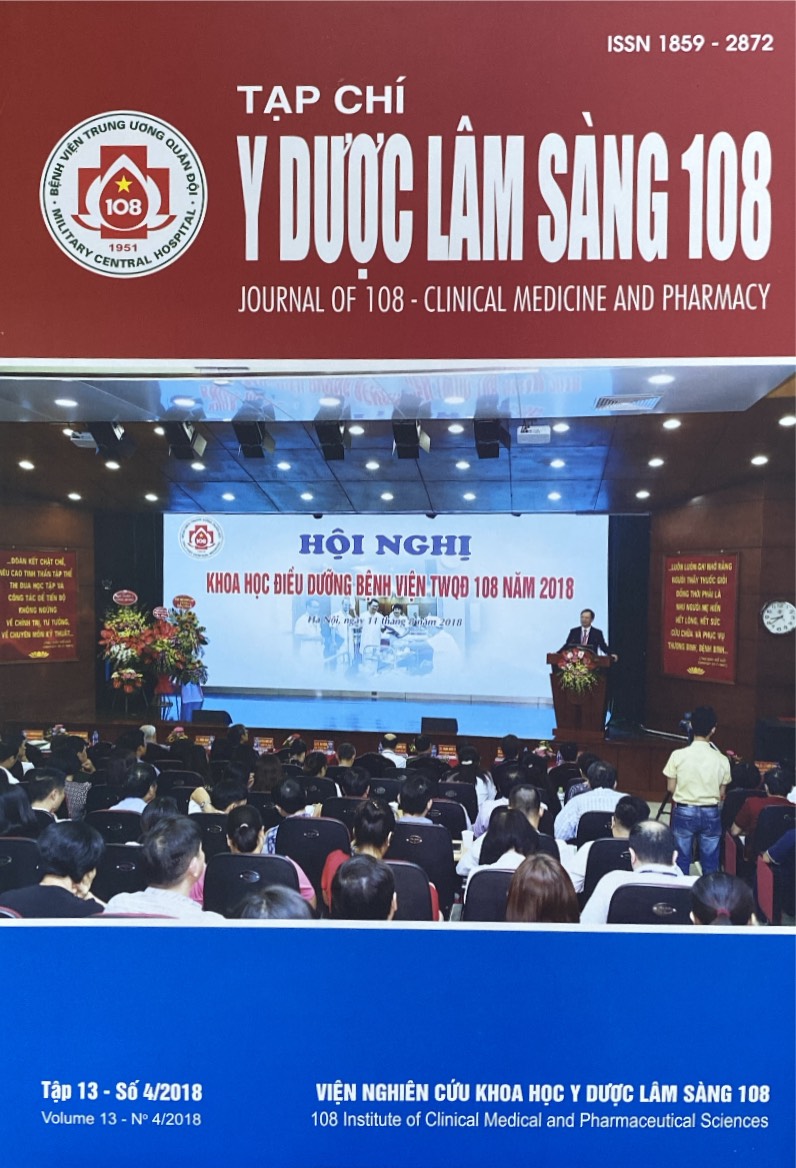Study on physical activity status among students in three high schools in Hanoi in 2017
Main Article Content
Keywords
Abstract
Objective: To describe the current situation of physical activity of students in 03 high schools Hanoi in 2017. Subject and method: Research applied cross sectional study using quantitative method with the cluster sampling method of 02 phases, at 03 high schools in Hanoi. 425 students participated in the study. In each grade, we randomly selected a representative class to study. The Active - Q Physical Activity questionnaire (Vietnamese version) was used. Result: The duration and energy metabolite equivalents (MET) of daily activities are not well distributed. The highest was study/work (6.55 ± 2.12 hours/day, 15.42 ± 5.84 MET - hours/day). While sports activity was lowest (0.03 hours/day, 0.19 MET - hours/day). Average total number of equivalent energy metabolism in days of students was 44.06 ± 6.52 MET - 24 hours/day (95% CI: 3.42 - 44.71). Percentage of students in the inactive, the light and moderate intensity physical activity (PA) is: 8.1%, 91.1%, 0.8% respectively. And 99.2% students don’t get level of PA due to recomendation of WHO. Conclusion: Duration for daily activities is inappropriate, the rate of less physical activity (PA) is still high.
Article Details
References
2. Bộ Nội vụ, Quỹ Dân số Liên Hiệp Quốc tại Việt Nam (UNFPA) (2015) Báo cáo Quốc gia về Thanh niên Việt Nam. Hà Nội, tr. 46-52.
3. Đồng Hương Lan (2016) Nghiên cứu phát triển thể chất của học sinh Trung học phổ thông chuyên các tỉnh Bắc miền Trung. Luận án Tiến sĩ Khoa học giáo dục. Trường Đại học Thể dục Thể thao Bắc Ninh.
4. De Moraes AC, Guerra PH, Menezes PR Hospitalaria (2013) The worldwide prevalence of insufficient physical activity in adolescents; a systematic review. Nutrición 28(3): 575-584.
5. Centers for Disease Control and Prevention (2011) Physical activity levels of high school students - United States, 2010. Morbidity and Mortality Weekly Report 60(23): 773-777.
6. Department of Medical Epidemiology and Biostatistics (Karolinska Institutet). The Active-Q Physical Activity Questionaires. [Online]. 2014 [cited 2014 Oct 02]. Available from:
http://ki.se/en/meb/the-active-q-physical-activity-questionnaires.
7. Braithwaite IE, Stewart AW, Hancox RJ, Murphy R, Wall CR, Beasley R et al (2017) Body mass index and vigorous physical activity in children and adolescents: An international cross-sectional study. Acta paediatrica 106(8): 1323-1330.
8. IO Senbanjo, KA Oshikoya (2010) Physical activity and body mass index of school children and adolescents in Abeokuta, Southwest Nigeria. World Journal of Pediatrics Aug 6(3): 217-222.
9. Shashank N, BM John, Seema P (2016) A study of the relationship of physical activity with scholastic performance and body mass index in children 12 - 18 years of age. Sri Lanka Journal of Child Health 45(1): 18-23.
10. Farias Júnior JC, Lopes AS, Mota J, Hallal PC (2012) Physical activity practice and associated factors in adolescents in Northeastern Brazil. Rev Saude Publica 46(3): 505-515.
11. WHO WHO Map Production Health Statistics and Information Systems (HIS). [Online]. Available from:
http://gamapserver.who.int/gho/interactive_charts/ncd/risk_factors/physical_inactivity/atlas.html?indicator=i1&date=Male.
12. WHO Prevalence of insufficient physical activity. [Online]. Available from:
http://www.who.int/gho/ncd/risk_factors/physical_activity_text/en/.
13. Wi-Young (2012) So association between of physical activity and academic performance in Korean adolescent students. BMC Public Health 12: 256.
 ISSN: 1859 - 2872
ISSN: 1859 - 2872
